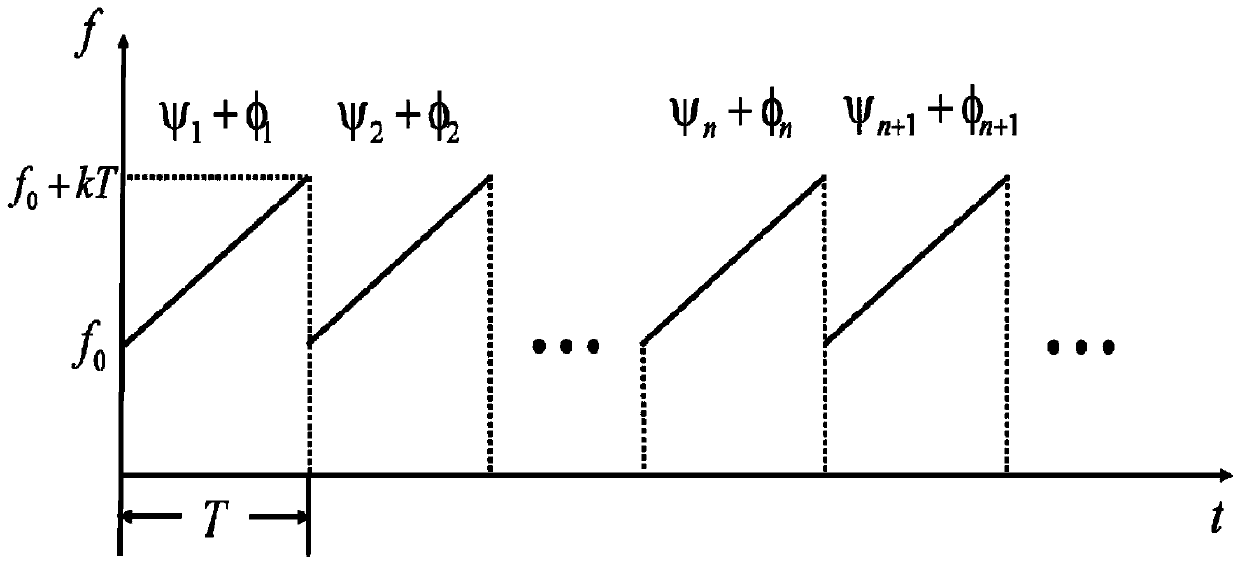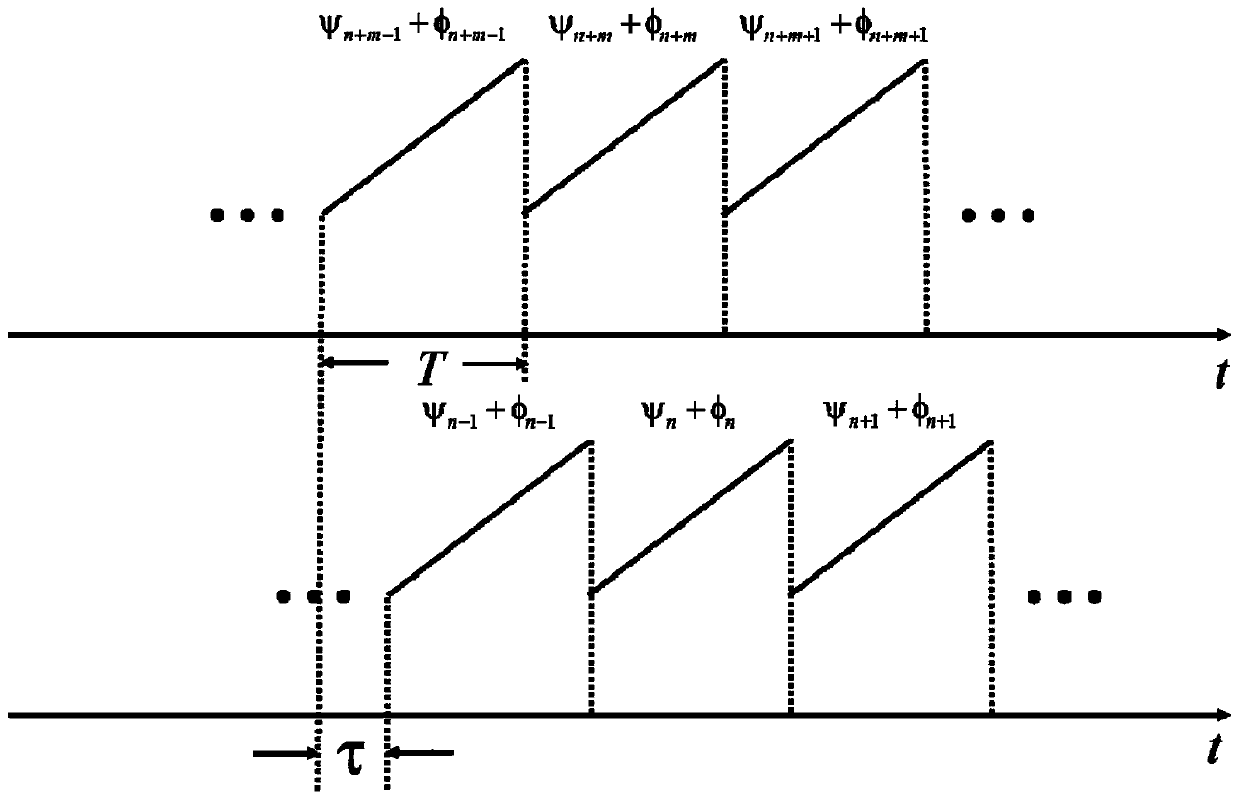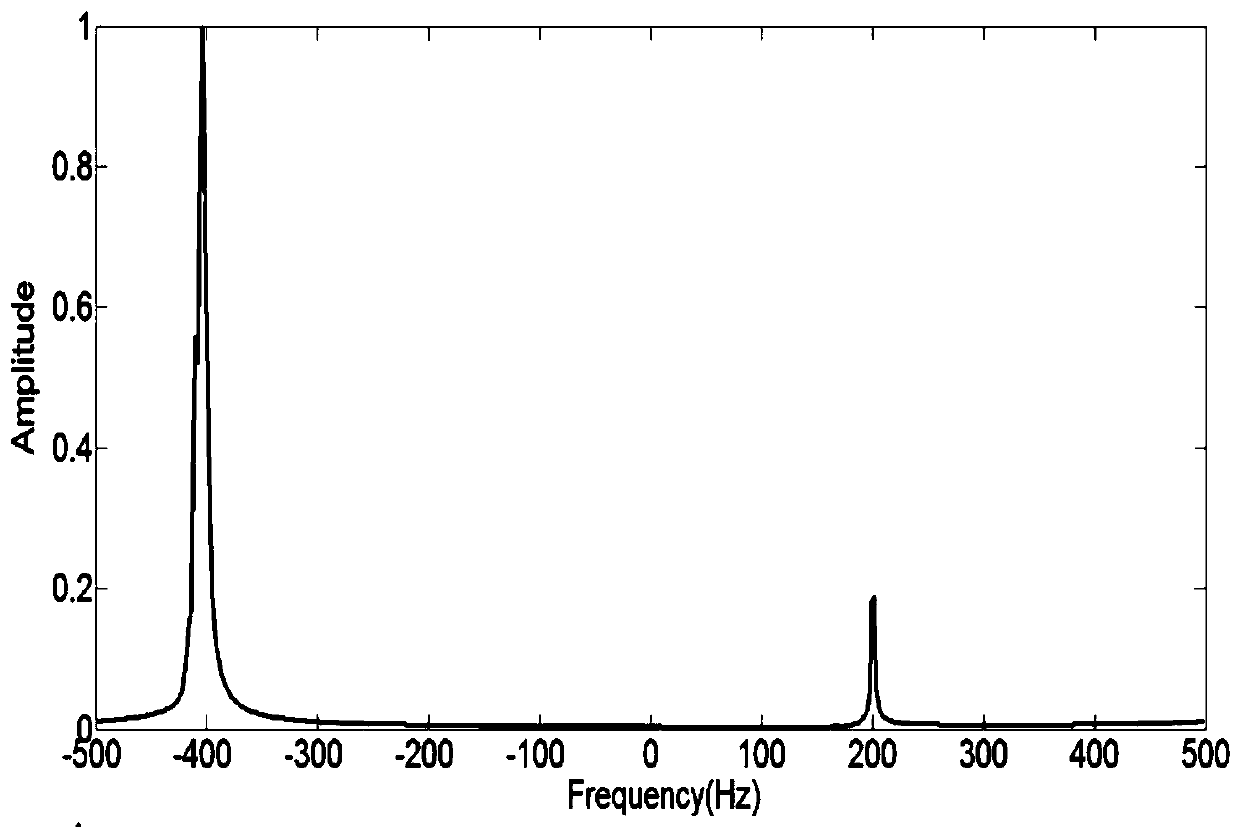A Waveform Design Method Based on Cognitive Radar Anti-Multi-hop Clutter Interference
A technology of clutter interference and waveform design, applied to radio wave measurement systems, instruments, etc., can solve problems affecting the normal detection of targets, and achieve the effect of improving detection performance
- Summary
- Abstract
- Description
- Claims
- Application Information
AI Technical Summary
Problems solved by technology
Method used
Image
Examples
specific Embodiment approach 1
[0019] Specific implementation mode one: combine figure 1 , figure 2 To illustrate this embodiment, the specific process of a cognitive radar anti-multi-hop clutter interference waveform design method in this embodiment is as follows:
[0020] Step 1: The radar transmits the linear frequency modulation continuous wave signal outward, the receiver receives the echo signal, and the radar performs range Doppler two-dimensional processing on the echo signal to obtain the multi-hop clutter in the echo signal on the Doppler spectrum The width l of and the position f of the multi-hop clutter on the Doppler spectrum loction ;
[0021] Step 2: Perform phase modulation on the basis of the linear frequency modulation continuous wave in step 1, and obtain the linear frequency modulation continuous wave signal waveform U after three phase modulations between pulses T (t); According to the width of the multi-hop clutter obtained in the step 1, obtain the phase encoding coefficient thre...
specific Embodiment approach 2
[0023] Specific embodiment 2: The difference between this embodiment and specific embodiment 1 is that in the step 1, the radar transmits a chirp continuous wave signal outwards, the receiver receives the echo signal, and the radar performs range Doppler on the echo signal. Two-dimensional processing to obtain the width l of the multi-hop clutter in the echo signal and the position f of the multi-hop clutter loction ; The specific process is:
[0024] The radar transmits the linear frequency modulation continuous wave signal outwards, and the receiver performs range-Doppler two-dimensional processing on the echo to obtain the target range and velocity information; the multi-hop clutter enters the receiver through multiple reflections from the ionosphere. Inter-pulse is a non-linear change, so the multi-hop clutter will shift and broaden on the Doppler spectrum when performing inter-pulse Doppler processing.
[0025] Denote the ionospheric slow-path phase modulation function a...
specific Embodiment approach 3
[0038] Specific embodiment three: the difference between this embodiment and specific embodiment one or two is that: in the step two, phase modulation is performed on the basis of the linear frequency modulation continuous wave in step one, and the linear frequency modulation continuous wave after three phase modulations between pulses is obtained Signal waveform U T (t); According to the width of the multi-hop clutter obtained in step 1, three phase encoding coefficients are obtained to realize the compression of multi-hop clutter; the specific process is:
[0039] It has been known that the multi-hop clutter broadening is mainly produced by the quadratic term of the ionospheric slow phase path modulation function Taylor expansion; in order to compensate the quadratic term, the inter-pulse cubic phase encoding is performed on the basis of the original linear frequency modulation continuous wave , after the pulse pressure processing, there will be a linear variation and a quad...
PUM
 Login to View More
Login to View More Abstract
Description
Claims
Application Information
 Login to View More
Login to View More - R&D
- Intellectual Property
- Life Sciences
- Materials
- Tech Scout
- Unparalleled Data Quality
- Higher Quality Content
- 60% Fewer Hallucinations
Browse by: Latest US Patents, China's latest patents, Technical Efficacy Thesaurus, Application Domain, Technology Topic, Popular Technical Reports.
© 2025 PatSnap. All rights reserved.Legal|Privacy policy|Modern Slavery Act Transparency Statement|Sitemap|About US| Contact US: help@patsnap.com



